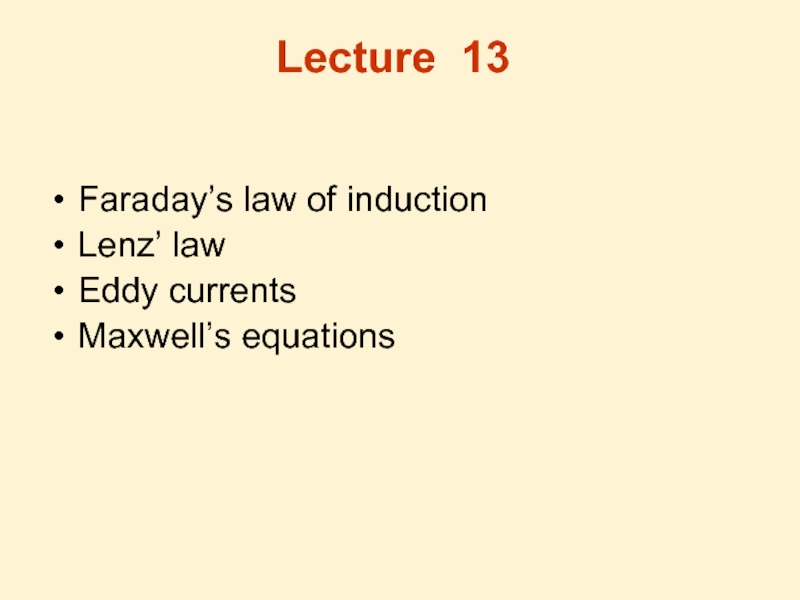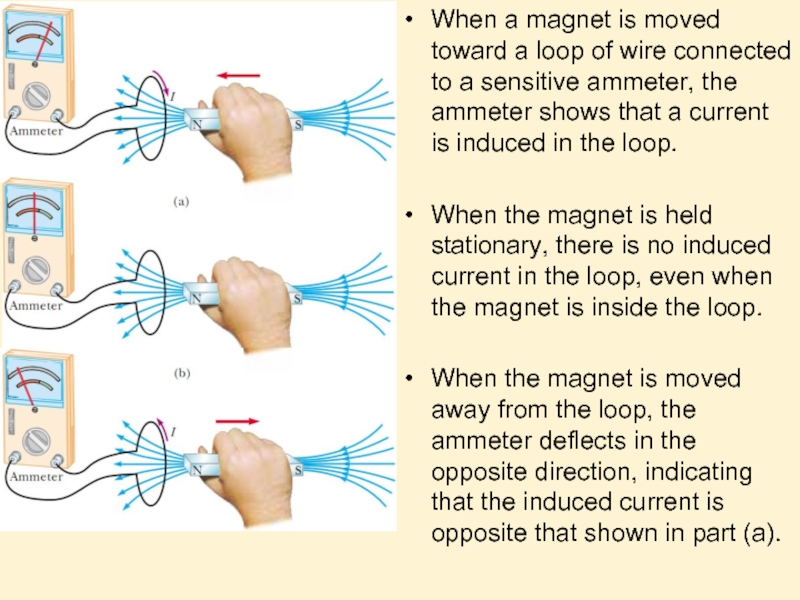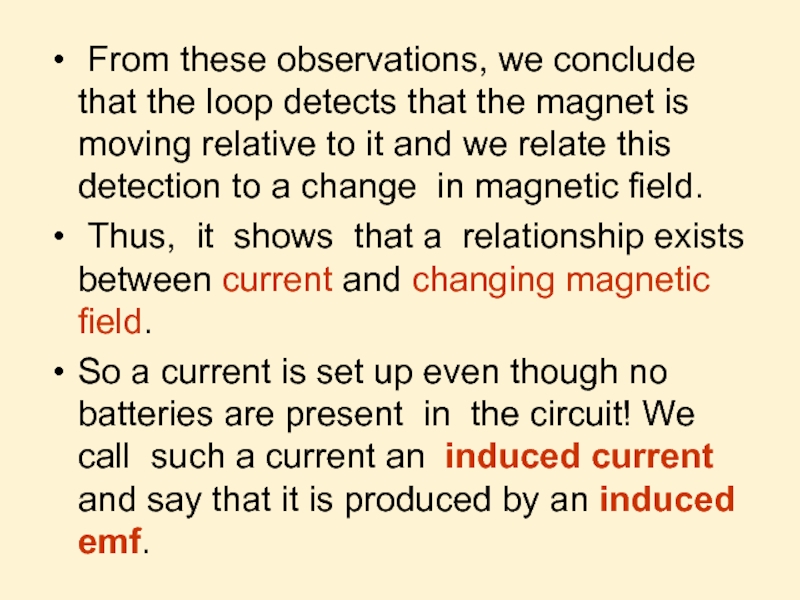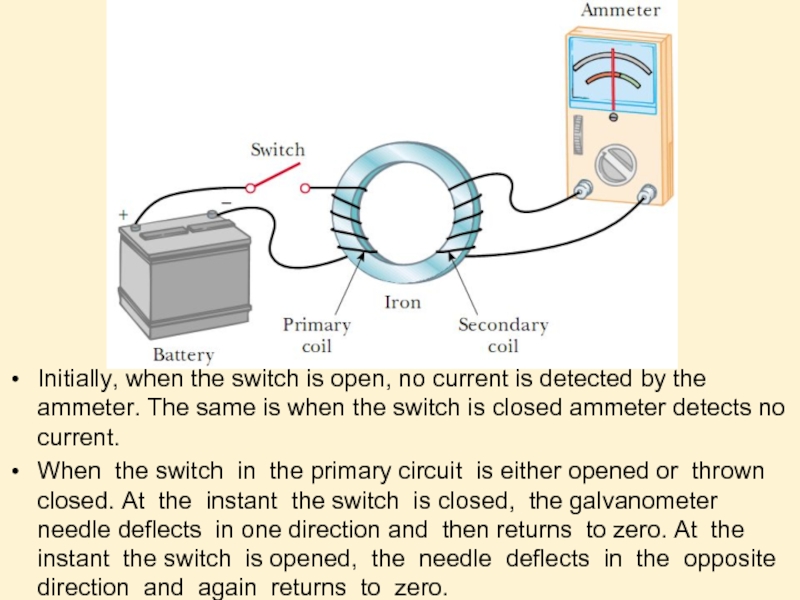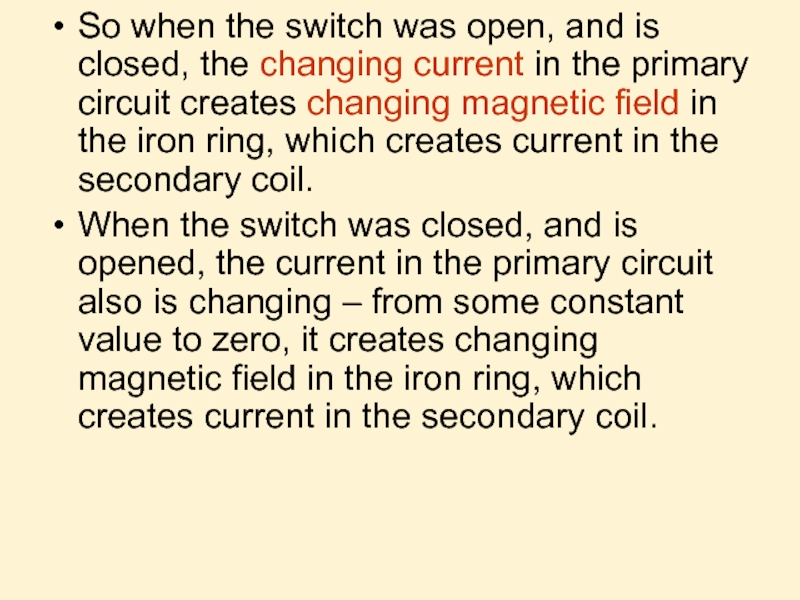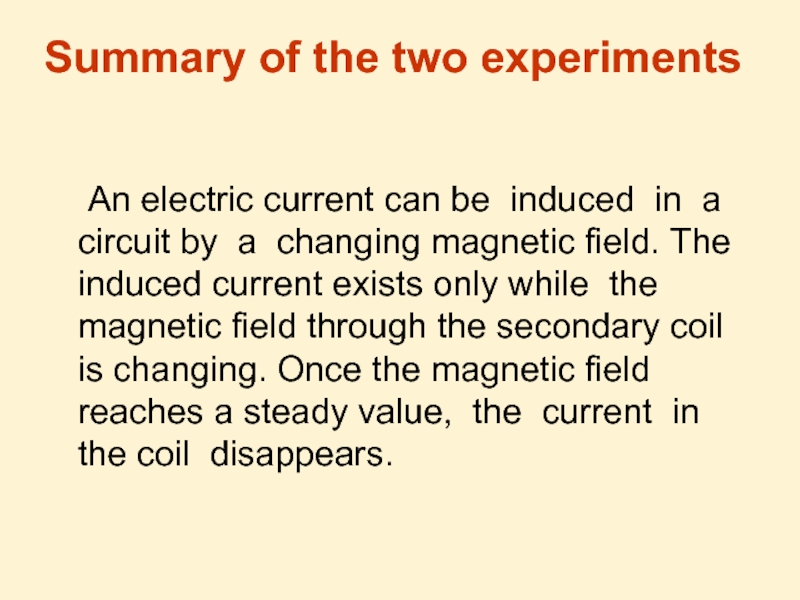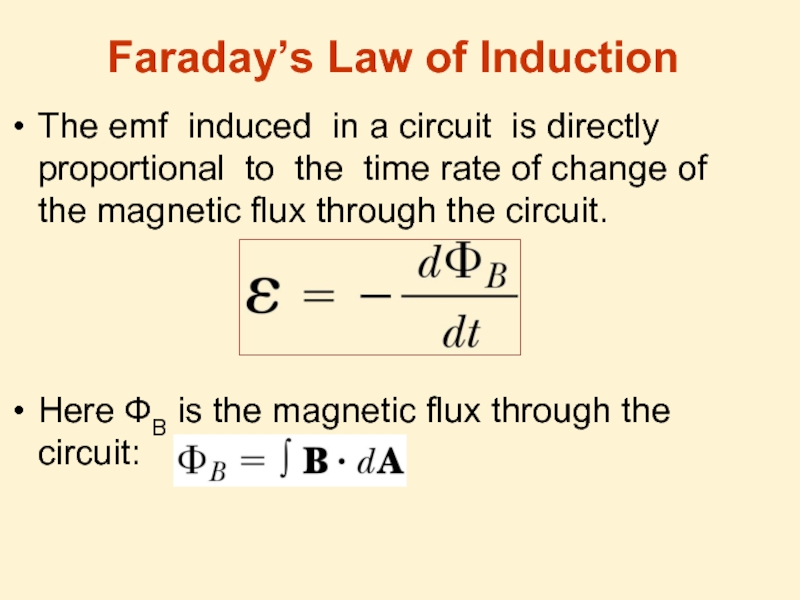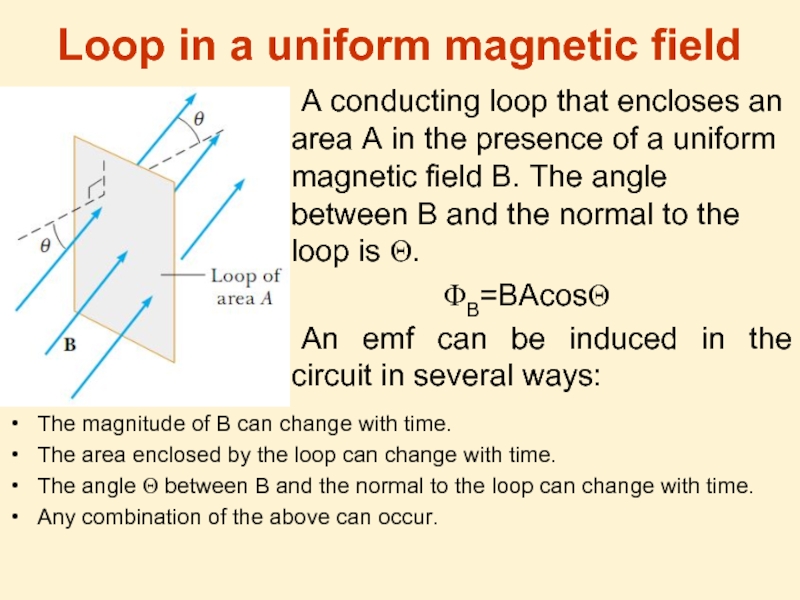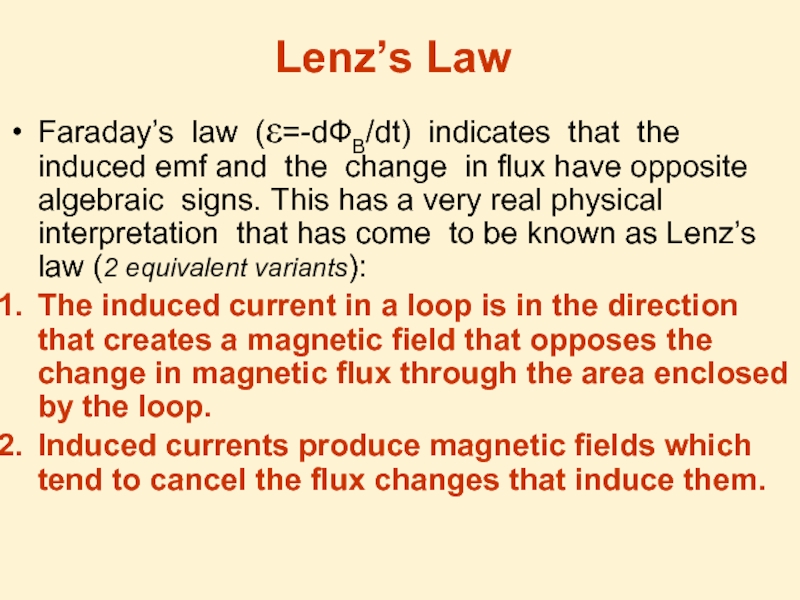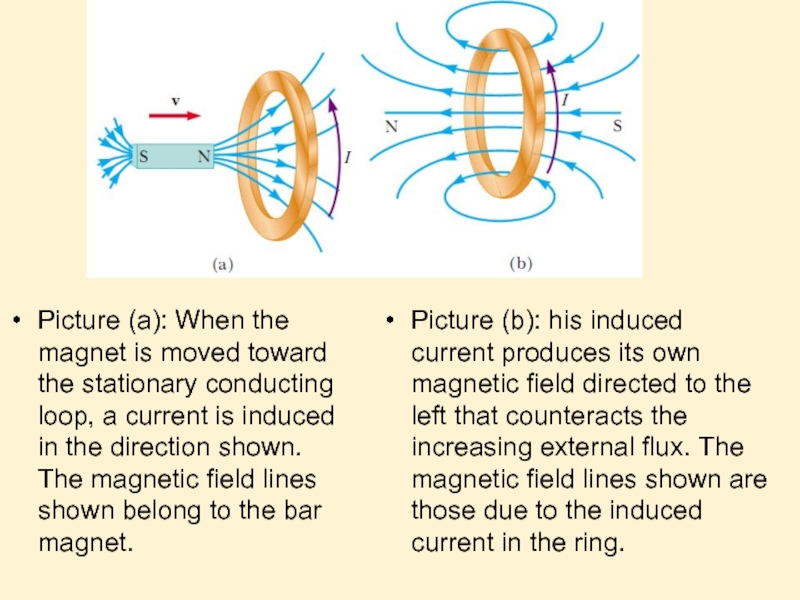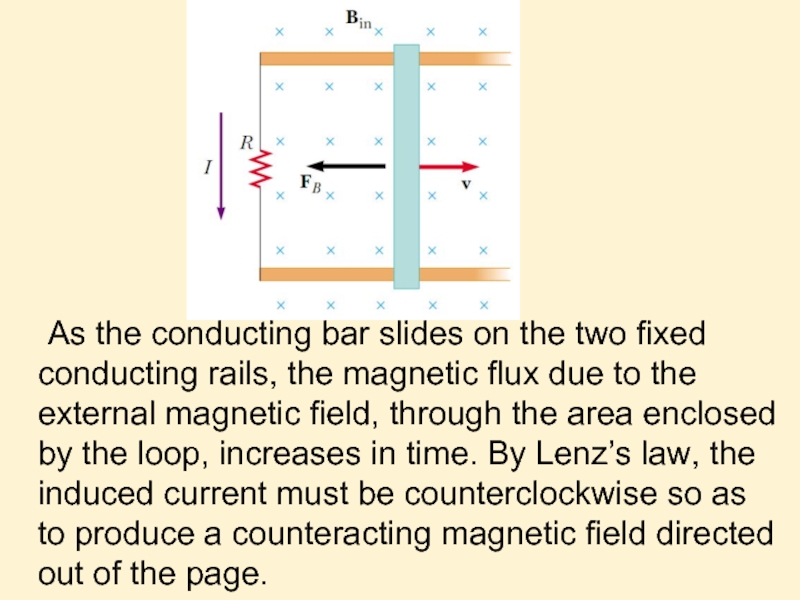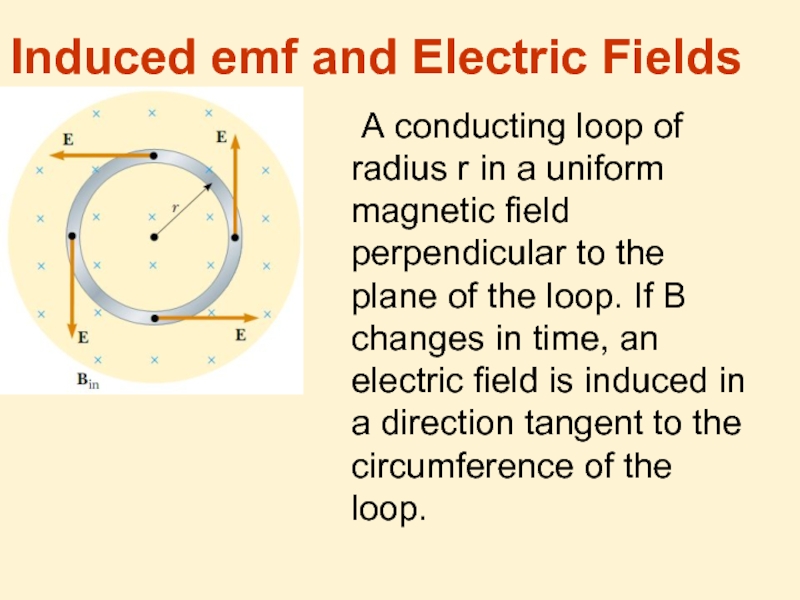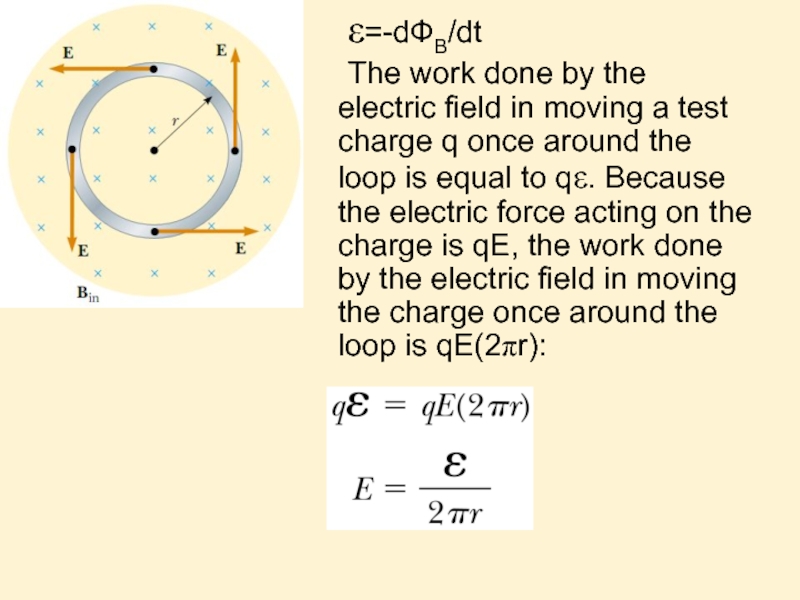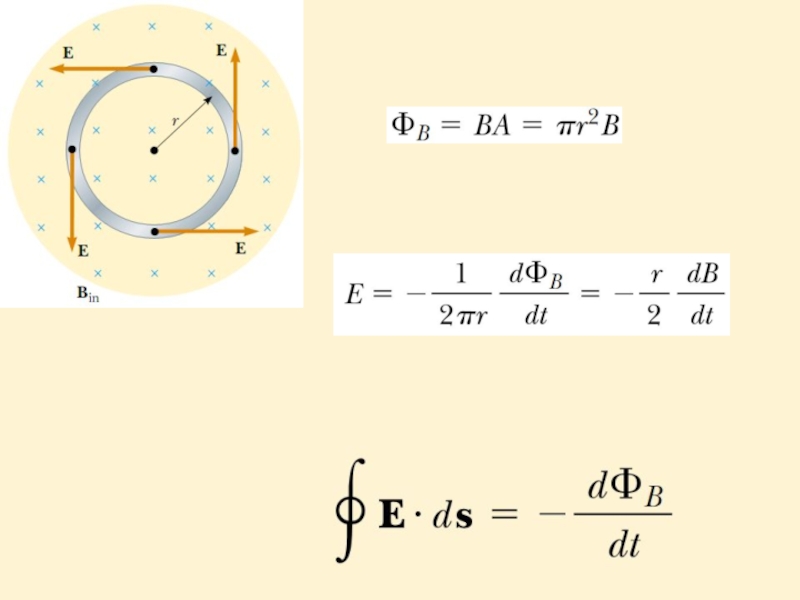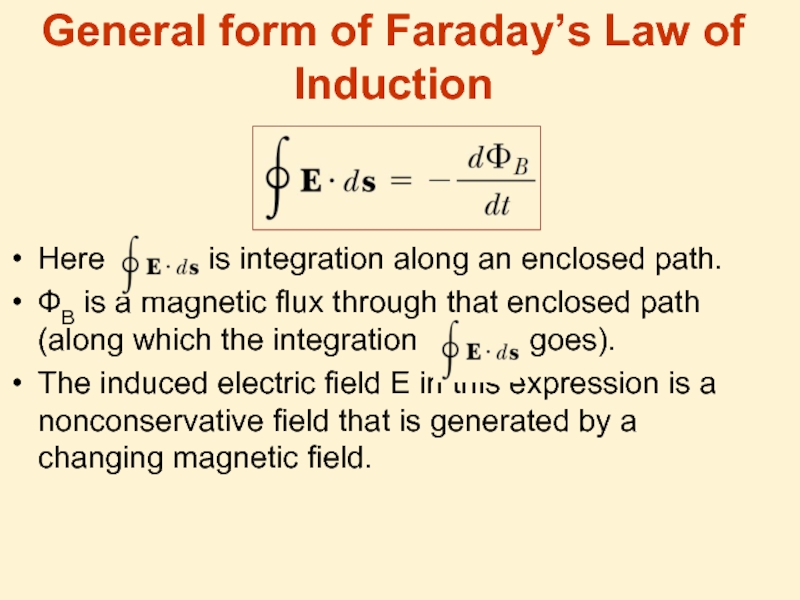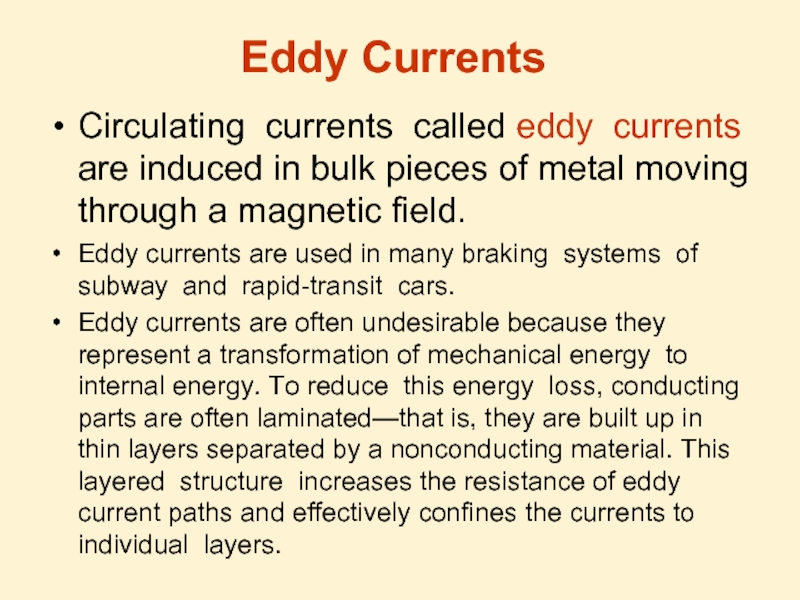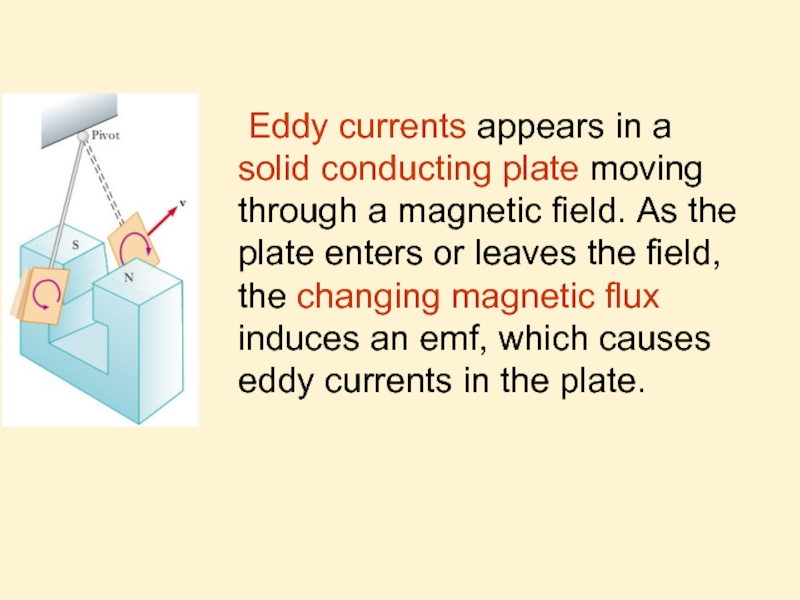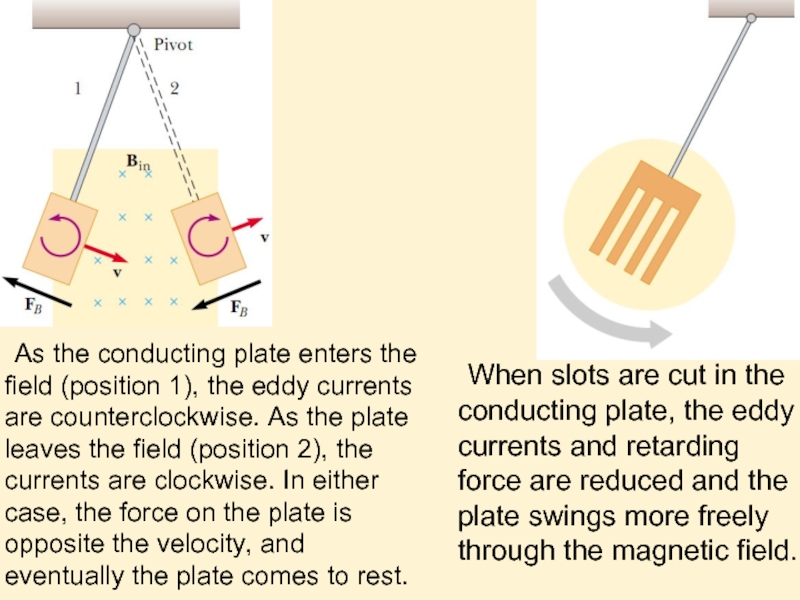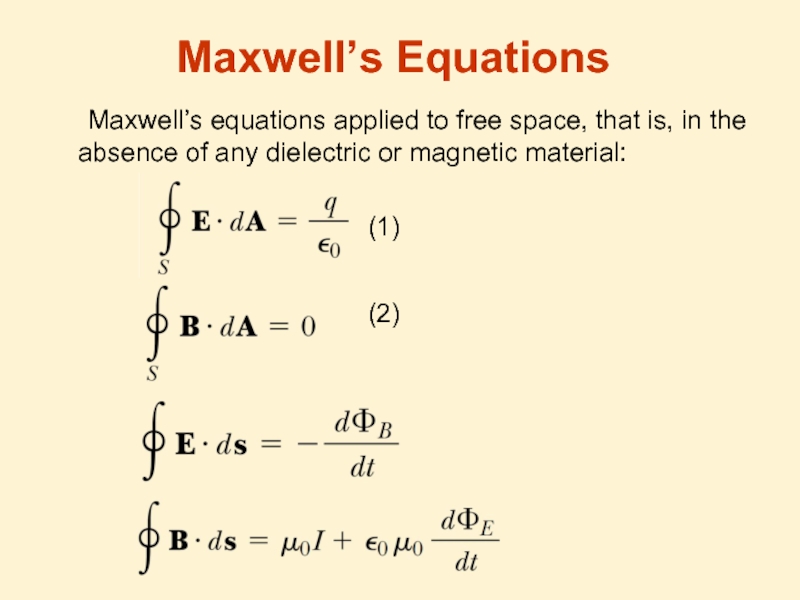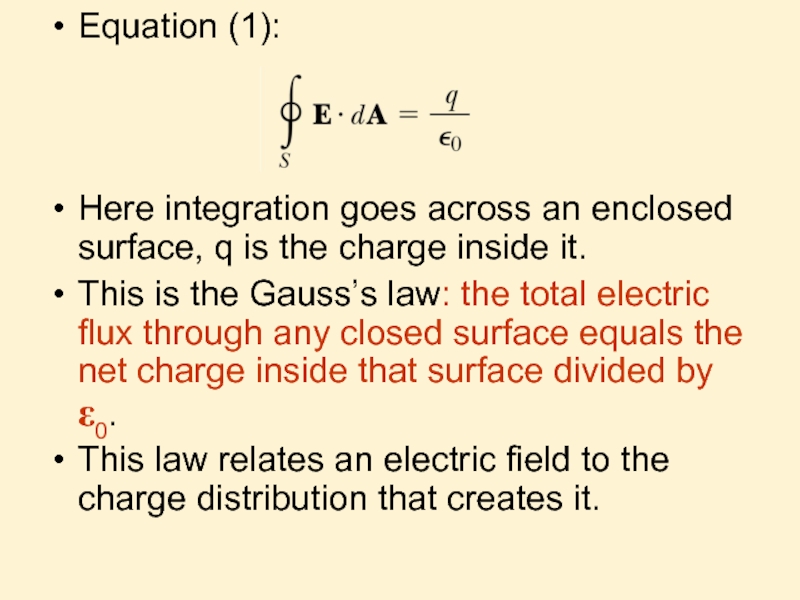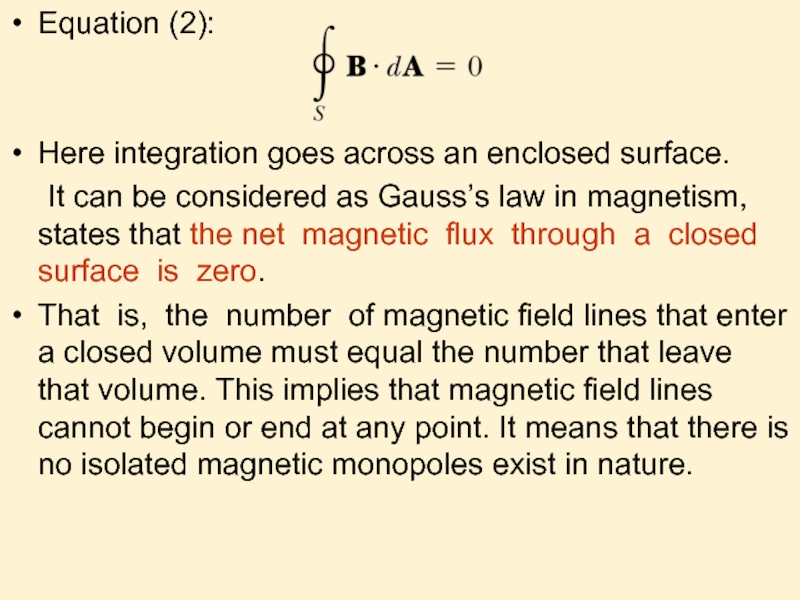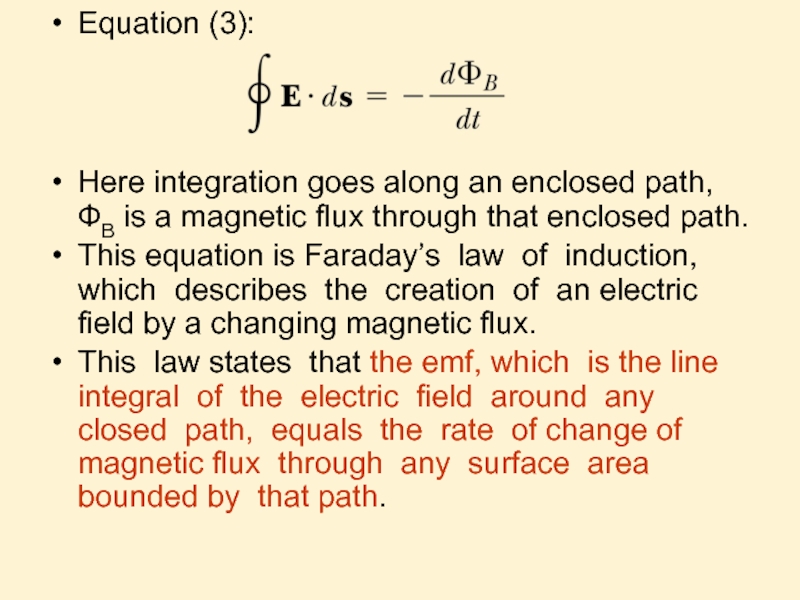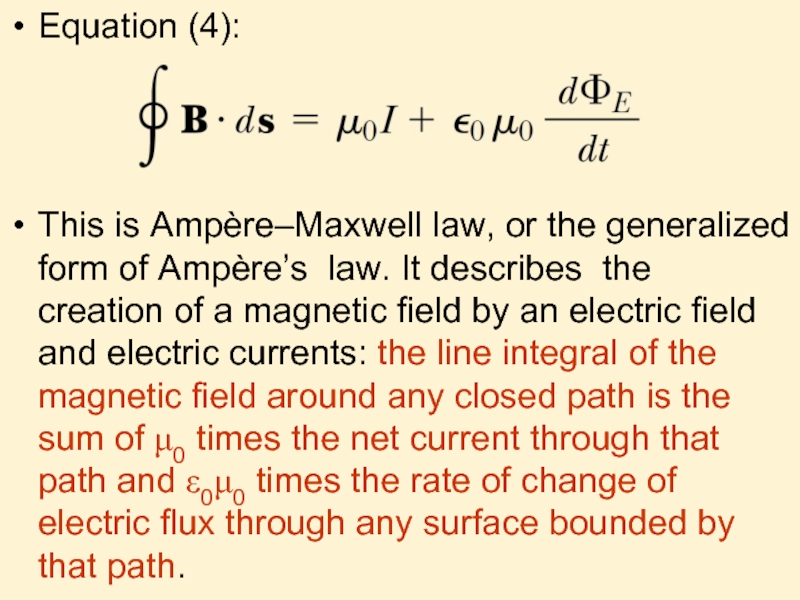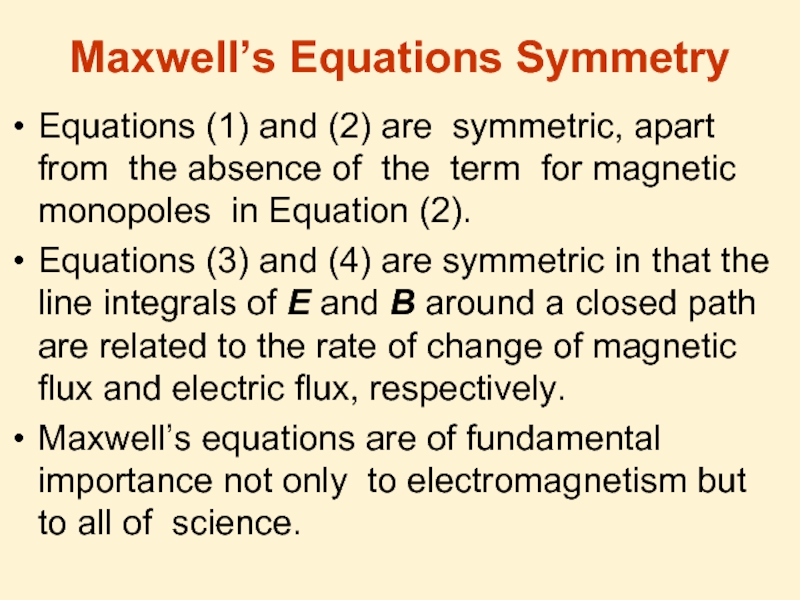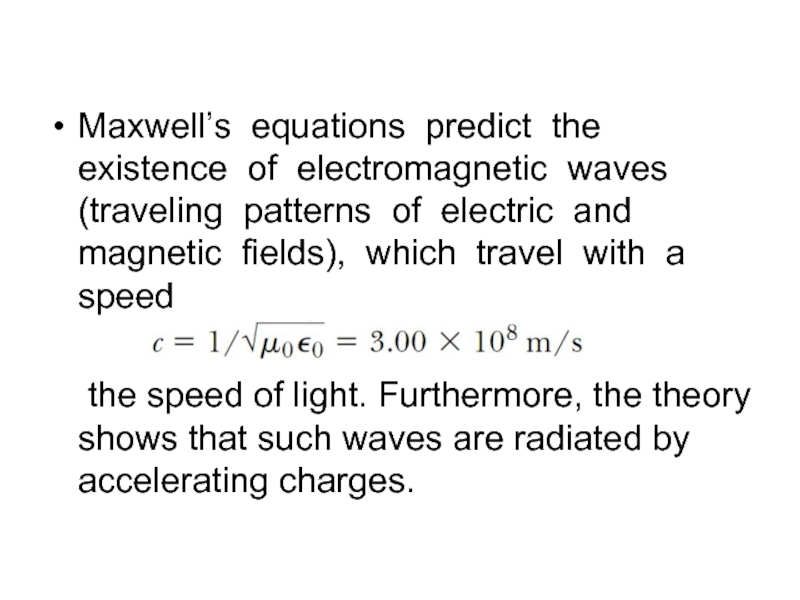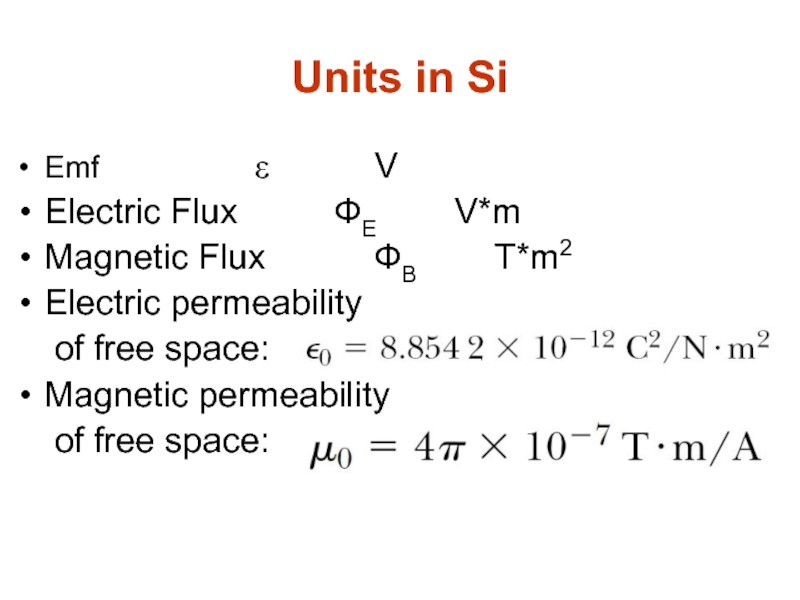- Главная
- Разное
- Дизайн
- Бизнес и предпринимательство
- Аналитика
- Образование
- Развлечения
- Красота и здоровье
- Финансы
- Государство
- Путешествия
- Спорт
- Недвижимость
- Армия
- Графика
- Культурология
- Еда и кулинария
- Лингвистика
- Английский язык
- Астрономия
- Алгебра
- Биология
- География
- Детские презентации
- Информатика
- История
- Литература
- Маркетинг
- Математика
- Медицина
- Менеджмент
- Музыка
- МХК
- Немецкий язык
- ОБЖ
- Обществознание
- Окружающий мир
- Педагогика
- Русский язык
- Технология
- Физика
- Философия
- Химия
- Шаблоны, картинки для презентаций
- Экология
- Экономика
- Юриспруденция
Faraday’s law of induction/ презентация
Содержание
- 1. Faraday’s law of induction/
- 2. Lecture 13 Faraday’s law of induction Lenz’ law Eddy currents Maxwell’s equations
- 3. When a magnet is moved toward a
- 4. From these observations, we conclude that
- 5. Initially, when the switch is open, no
- 6. So when the switch was open, and
- 7. An electric current can be induced in
- 8. Faraday’s Law of Induction The emf induced
- 9. Loop in a uniform magnetic field A
- 10. Lenz’s Law Faraday’s law (ε=-dФB/dt) indicates that
- 11. Picture (a): When the magnet is moved
- 12. As the conducting bar slides on the
- 13. Induced emf and Electric Fields A conducting
- 14. ε=-dФB/dt The work done by the electric
- 16. General form of Faraday’s Law of Induction
- 17. Eddy Currents Circulating currents called eddy currents
- 18. Eddy currents appears in a solid conducting
- 19. As the conducting plate enters the field
- 20. Maxwell’s Equations Maxwell’s equations applied to free
- 21. Equation (1): Here integration
- 22. Equation (2): Here integration goes
- 23. Equation (3): Here integration
- 24. Equation (4): This is
- 25. Maxwell’s Equations Symmetry Equations (1) and (2)
- 26. Maxwell’s equations predict the existence of electromagnetic
- 27. Units in Si Emf ε V Electric
Слайд 3When a magnet is moved toward a loop of wire connected
When the magnet is held stationary, there is no induced current in the loop, even when the magnet is inside the loop.
When the magnet is moved away from the loop, the ammeter deflects in the opposite direction, indicating that the induced current is opposite that shown in part (a).
Слайд 4 From these observations, we conclude that the loop detects that
Thus, it shows that a relationship exists between current and changing magnetic field.
So a current is set up even though no batteries are present in the circuit! We call such a current an induced current and say that it is produced by an induced emf.
Слайд 5Initially, when the switch is open, no current is detected by
When the switch in the primary circuit is either opened or thrown closed. At the instant the switch is closed, the galvanometer needle deflects in one direction and then returns to zero. At the instant the switch is opened, the needle deflects in the opposite direction and again returns to zero.
Слайд 6So when the switch was open, and is closed, the changing
When the switch was closed, and is opened, the current in the primary circuit also is changing – from some constant value to zero, it creates changing magnetic field in the iron ring, which creates current in the secondary coil.
Слайд 7 An electric current can be induced in a circuit by a
Summary of the two experiments
Слайд 8Faraday’s Law of Induction
The emf induced in a circuit is directly
Here ФB is the magnetic flux through the circuit:
Слайд 9Loop in a uniform magnetic field
A conducting loop that encloses an
ΦB=BAcosΘ
An emf can be induced in the circuit in several ways:
The magnitude of B can change with time.
The area enclosed by the loop can change with time.
The angle Θ between B and the normal to the loop can change with time.
Any combination of the above can occur.
Слайд 10Lenz’s Law
Faraday’s law (ε=-dФB/dt) indicates that the induced emf and the
The induced current in a loop is in the direction that creates a magnetic field that opposes the change in magnetic flux through the area enclosed by the loop.
Induced currents produce magnetic fields which tend to cancel the flux changes that induce them.
Слайд 11Picture (a): When the magnet is moved toward the stationary conducting
Picture (b): his induced current produces its own magnetic field directed to the left that counteracts the increasing external flux. The magnetic field lines shown are those due to the induced current in the ring.
Слайд 12 As the conducting bar slides on the two fixed conducting rails,
Слайд 13Induced emf and Electric Fields
A conducting loop of radius r in
Слайд 14 ε=-dФB/dt
The work done by the electric field in moving a test
Слайд 16General form of Faraday’s Law of Induction
Here
ФB is a magnetic flux through that enclosed path (along which the integration goes).
The induced electric field E in this expression is a nonconservative field that is generated by a changing magnetic field.
Слайд 17Eddy Currents
Circulating currents called eddy currents are induced in bulk pieces
Eddy currents are used in many braking systems of subway and rapid-transit cars.
Eddy currents are often undesirable because they represent a transformation of mechanical energy to internal energy. To reduce this energy loss, conducting parts are often laminated—that is, they are built up in thin layers separated by a nonconducting material. This layered structure increases the resistance of eddy current paths and effectively confines the currents to individual layers.
Слайд 18 Eddy currents appears in a solid conducting plate moving through a
Слайд 19 As the conducting plate enters the field (position 1), the eddy
When slots are cut in the conducting plate, the eddy currents and retarding force are reduced and the plate swings more freely through the magnetic field.
Слайд 20Maxwell’s Equations
Maxwell’s equations applied to free space, that is, in the
(1)
(2)
(3)
(4)
Слайд 21Equation (1):
Here integration goes across an enclosed surface, q is the
This is the Gauss’s law: the total electric flux through any closed surface equals the net charge inside that surface divided by ε0.
This law relates an electric field to the charge distribution that creates it.
Слайд 22Equation (2):
Here integration goes across an enclosed surface.
It can be considered
That is, the number of magnetic field lines that enter a closed volume must equal the number that leave that volume. This implies that magnetic field lines cannot begin or end at any point. It means that there is no isolated magnetic monopoles exist in nature.
Слайд 23Equation (3):
Here integration goes along an enclosed path, ФB is a
This equation is Faraday’s law of induction, which describes the creation of an electric field by a changing magnetic flux.
This law states that the emf, which is the line integral of the electric field around any closed path, equals the rate of change of magnetic flux through any surface area bounded by that path.
Слайд 24Equation (4):
This is Ampère–Maxwell law, or the generalized form of Ampère’s
Слайд 25Maxwell’s Equations Symmetry
Equations (1) and (2) are symmetric, apart from the
Equations (3) and (4) are symmetric in that the line integrals of E and B around a closed path are related to the rate of change of magnetic flux and electric flux, respectively.
Maxwell’s equations are of fundamental importance not only to electromagnetism but to all of science.
Слайд 26Maxwell’s equations predict the existence of electromagnetic waves (traveling patterns of
the speed of light. Furthermore, the theory shows that such waves are radiated by accelerating charges.
Слайд 27Units in Si
Emf ε V
Electric Flux ФE V*m
Magnetic Flux ФB T*m2
Electric permeability
of free space:
Magnetic permeability
of free space:

